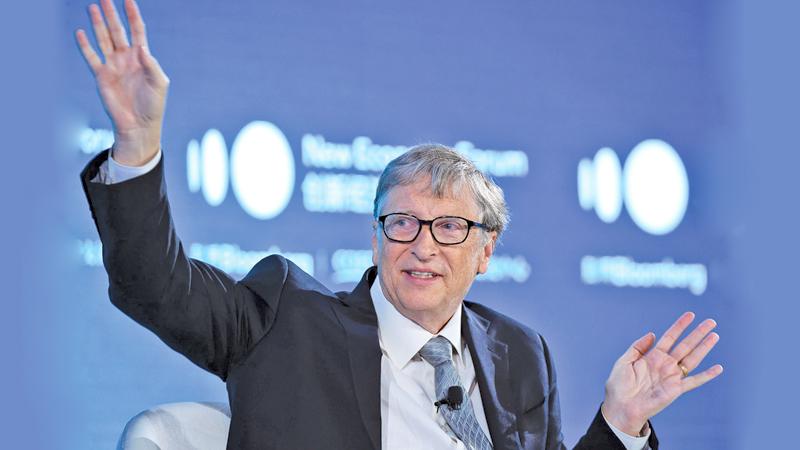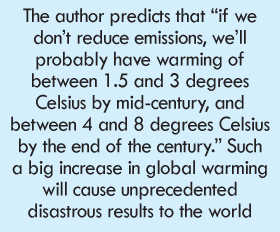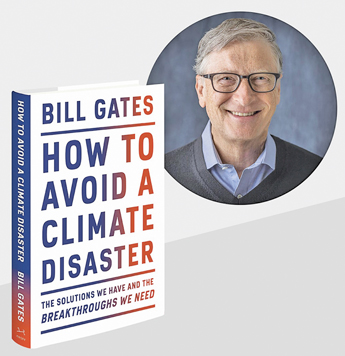
Title: How To Avoid A Climate Disaster: The Solutions We Have And The Breakthroughs We Need
Author: Bill Gates
Publisher: Knopf
Bill Gates is generally known as a multi-billionaire, tech giant, philanthropist, he has never been known as a writer or climate activist. However, with his new book How To Avoid A Climate Disaster, he becomes a writer on environment issues, and also a climate activist. In this book he outlines how his own thinking on the topic has evolved over the years, and describes a path that everybody can participate in some way to change the current climate issues, especially zero reducing the emission of greenhouse gas.
Introduction
 In the introduction titled 51 Billion to Zero he says, “There are two numbers you need to know about climate change. The first is 51 billion. The other is zero.
In the introduction titled 51 Billion to Zero he says, “There are two numbers you need to know about climate change. The first is 51 billion. The other is zero.
“Fifty-one billion is how many tons of greenhouse gases the world typically adds to the atmosphere every year. Although the figure may go up or down a bit from year to year, it’s generally increasing. This is where we are today.
“Zero is what we need to aim for. To stop the warming and avoid the worst effects of climate change—and these effects will be very bad—humans need to stop adding greenhouse gases to the atmosphere.”
But why do we need zero gas emission instead of reducing it? The author gives the answer in the first chapter:
“The reason we need to get to zero is simple. Greenhouse gases trap heat, causing the average surface temperature of the earth to go up. The more gases there are, the more the temperature rises. And once greenhouse gases are in the atmosphere, they stay there for a very long time; something like one-fifth one-fifth of the carbon dioxide emitted today will still be there in 10,000 years.”
So he suggests that first we have to get to zero greenhouse gas emissions. And then, to deploy the tools we already have, like solar and wind, faster and smarter, and finally, to create and roll out breakthrough technologies that can take us the rest of the way.
Content
The book has 12 chapters apart from the introduction and the afterword. They are Why Zero? This Will Be Hard, Five Questions to Ask in Every Climate Conversation, How We Plug In, How We Make Things, How We Grow Things, How We Get Around, How We Keep Cool and Stay Warm, Adapting to a Warmer World, Why Government Policies Matter, A Plan for Getting to Zero and What Each of Us Can Do.
The author specially focuses on the renewable energy solutions in the book. In fact, there is a whole chapter on that subject. And he points out that not only should we go for renewable energy solutions to stop adding more gases into the air, but at some point we need to start removing some of the gases we have already emitted.
His commitments
 To realise his goals he himself made some commitments too: In 2019, he divested all his direct holdings in oil and gas companies, as did the trust that manages the Gates Foundation’s endowment. In 2020, he started buying sustainable jet fuel and would fully offset his family’s aviation emissions in 2021.
To realise his goals he himself made some commitments too: In 2019, he divested all his direct holdings in oil and gas companies, as did the trust that manages the Gates Foundation’s endowment. In 2020, he started buying sustainable jet fuel and would fully offset his family’s aviation emissions in 2021.
For his non-aviation emissions, he is buying offsets through a company that runs a facility that removes carbon dioxide from the air. He is also supporting a nonprofit that installs clean energy upgrades in affordable housing units in Chicago.
Apart from that he is investing in zero-carbon technologies too. And he has put more than $1 billion into approaches that he hopes will help the world get to zero, including affordable and reliable clean energy and low-emissions cement, steel, meat, and more.
What is warming?
In the book he also presents some scientific analysis on how the greenhouse gases cause warming. He says, though the warming is a result of absorbing heat by the greenhouse gases, it is a somewhat complex process. As he describes, all molecules are vibrating and the faster they vibrate, the hotter they are. But when certain types of molecules are hit with radiation at certain wavelengths, they block the radiation, soak up its energy, and vibrate faster. However, Sunlight passes right through most greenhouse gases without getting absorbed. But the problem arises when the earth radiates some of the energy that it took from the Sunlight back towards space. When this energy is emitted in just the right range of wavelengths to get absorbed by greenhouse gases, rather than going out harmlessly into the void, it hits the greenhouse molecules and makes them vibrate faster, heating up the atmosphere.
Disastrous consequences
The author predicts that “if we don’t reduce emissions, we’ll probably have between 1.5 and 3 degrees Celsius of warming by mid-century, and between 4 and 8 degrees Celsius by the end of the century.” Such a big increase in global warming will cause unprecedented disastrous results to the world.
“…. In many ways, a 2-degree rise wouldn’t simply be 33 percent worse than 1.5; it could be 100 percent worse. Twice as many people would have trouble getting clean water. Corn production in the tropics would go down twice as much.”
He elaborates on the issue of rising sea level from global warming, and says it will affect the poorest people in the world very dangerously. Especially, in Bangladesh it has hundreds of miles of coastline on the Bay of Bengal; most of the country sits in low-lying, flood-prone river deltas; and it gets heavy rainfall every year. “But the changing climate is making life there even harder. Thanks to cyclones, storm surges, and river floods, it is now common for 20 to 30 percent of Bangladesh to be underwater, wiping out crops and homes and killing people throughout the country.”
He says that according to research cited by the Intergovernmental Panel on Climate Change (IPCC), a rise of 2 degrees Celsius would cut the geographic range of vertebrates by 8 percent, plants by 16 percent, and insects by 18 percent.
Covid19 and climate change
The author compares between the consequences of Covid19 pandemic and the climate change disasters: “Using data from the Spanish flu of 1918 and the COVID-19 pandemic and averaging it out over the course of a century, we can estimate the amount by which a global pandemic increases the global mortality rate. It’s about 14 deaths per 100,000 people each year.
“How does that compare to climate change? By mid-century, increases in global temperatures are projected to raise global mortality rates by the same amount — 14 deaths per 100,000. By the end of the century, if emissions growth stays high, climate change could be responsible for 75 extra deaths per 100,000 people.
“In other words, by mid-century, climate change could be just as deadly as Covid-19, and by 2100 it could be five times as deadly.” Hence, he emphasises the seriousness of the upcoming global climate disaster.
Solutions
There are three suggestions he brings forward to face this challenge. First, “we need international cooperation.” Second, “we need to let science — actually, many different sciences — guide our efforts.” Third, “our solutions should meet the needs of the people who are hardest hit.”
He reiterates, “If rich countries worry only about lowering their own emissions and don’t work to make clean technologies practical for everyone, we’ll never get to zero. In that sense, helping others is not just an act of altruism, it’s also in our self-interest. We all have reasons to get to zero and help others do it, too. Temperatures will not stop rising in Texas unless emissions stop rising in India.”
Optimistic ending
How To Avoid A Climate Disaster by Bill Gates is a timely resource. More importantly, it ends with an optimistic view about the global disaster:
“The year 2020 was a huge and tragic setback. But I am optimistic that we will get Covid-19 under control in 2021. And I’m optimistic that we’ll make real progress on climate change — because the world is more committed to solving this problem than it has ever been.”
